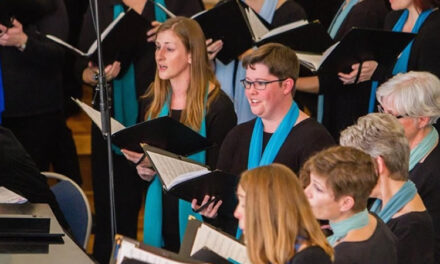A relatively new quartet, the Quatour Ébène, based in Paris, made its Triangle debut in Baldwin Auditorium, appearing under the auspices of the Chamber Arts Society of Durham, a component of Duke Performances. The ensemble’s name means “ebony”; its members wear black concert attire.
The group made its first big splashes in 2004, took another big prize in 2005, and secured a contract with Virgin Classics in 2009. But a year before that, a friend involved with the Wissembourg Festival (whose website may be viewed in French or German) was singing the Ébène’s praises. As it turned out Duke won the mini-contest to bring them here first; this surely will not be their last visit!
Like many of the more enlightened string quartets, the violinists swap off playing first, an option not available to the others – unless there’s an extra player or two! The musicians are violinists Pierre Colombet and Gabriel La Magadure, violist Mathieu Herzog, and cellist Raphaël Merlin. The latter was a magician of sorts in terms of his art – but so, too, were his colleagues.
“Don’t complain about what they didn’t do,” my mentor often told me. (“It had nothing to do with the concert,” she’d add.) True enough. But why bring a French quartet all the way from Paris (even if they came to Durham directly from Boston) and let them in and out of town without playing even one little French tune? Eh bien.
So ’twas all German fare: Mozart’s “Haydn No. 3” (Quartet No. 16, in E Flat, K.428), Mendelssohn’s Second (in A, Op. 13), and Robert Schumann’s Third (Op. 41, No. 3, also in A).
They’ve been doing this kind of work for a decade now, but they’re still young and thin and eager and active and engaged. They’re also good. And their playing is refined and polished and often restrained, sometimes a shade too much. The Mozart was exquisitely beautiful, and it bore all the requisite hallmarks of an exceptional performance, except for the fact that the first two movements, at least, had had most of the life polished out of them. There were no sinews there beneath the sleek swimmers’ outer skins. And the dynamics seemed compressed to a disarmingly narrow compass. Now granted, it might have been the hall or a factor of where we were sitting. The quartet was spread out a good deal more than most, so there was clear definition, and they were slightly forward of where the old proscenium arch used to be, so they were nominally on what used to be the lip of the stage – plenty far enough forward to make one think the almost other-worldly approach to the first half of the Mozart was intentional. And things picked up in the minuet and the finale, perhaps by artistic design – or maybe because we gradually got used to the sound of the ensemble in that hall. In this second half (as it were), only the viola seemed a bit remote from our listening-point. In any event, the applause was warm enough.
When they came back for the Mendelssohn, it was as if a switch had been flipped, for the “presence” was greater, the playing, both more dynamic and more dramatic, and the overall impression was altogether more favorable. The players often bit into this music with aggressive attacks, the releases were crisp and precise, and the music by the teenaged composer, as realized by these young dynamo artists, drew keen waves of applause from the crowd.
There was more of the same in the Schumann, perhaps the finest of that master’s essays in this form but nonetheless still a challenge to put over without setting up at least a twinge of ennui among the listeners. Through a combination of excitement, engagement, keen watchfulness, and intensity combined with the utmost precision, these visitors managed to deliver on all counts. In the animated parts and in the slow, reflective ones, too, this was a performance to write home about, and the audience seemed to realize that, too, for they heaped upon the players wave upon wave of applause.
The reward was perhaps unanticipated by those who have not explored the ensemble’s recordings or their extensive YouTube presence: “Misty,” beloved of one-time teens of a certain maturity, has probably never sounded quite so restrained and refined. Which brought us back to where we came in. Eh bien.
To meet them online – and to hear them play some French music, from a Warner promo video – click here.
***
The chair of the CAS’ advisory board announced next season’s line-up: Six string quartets are augmented by a single wind ensemble and a piano trio, all appearing in Baldwin Auditorium:
- Takács Quartet with Erika Eckert, viola (Oct. 4);
- Belcea Quartet (Oct. 25);
- Horszowski Piano Trio (Nov. 8);
- St. Lawrence String Quartet (Dec. 12);
- Calefax Reed Quintet (Jan. 24);
- Jerusalem String Quartet (Feb. 14);
- Elias String Quartet with Benjamin Hochman, piano (Mar. 21); and
- Artemis Quartet (Apr. 17).
Details will be in our calendar in due course.











